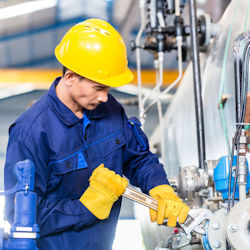13 Hazard Types
- Mechanical hazards: Tools, equipment, machinery and any object may contain pinch points, sharp points and edges, weight, rotating parts, stability, ejected parts and materials that could cause injury.
- Pressure: Increased pressure in hydraulic and pneumatic systems. Pressure may cause ruptures in pressure vessels, whipping hoses. Small high pressure leaks may cause serious injuries.
- Radiation: Electromagnetic radiation hazards vary depending on the frequency (wavelength) of the energy. Generally, the higher the frequency, the more severe the potential injury. Non-ionizing (ultra-violet, visible light) may cause burns. Ionizing radiation actually has the potential to destroy tissue by dislodging electrons from atoms making up body cells.
- Toxic substances: Materials that in small amounts may cause injury to skin and internal organs are considered toxic. Toxics may enter through inhalation, ingestion, absorbed or injected.
- Vibration/Noise: Produce adverse physiological and psychological effects. Whole-body vibration is a common hazard in the trucking industry. Segmental vibration and noise hazards exist when working with equipment, such as jack hammers.
Knowledge Check Choose the best answer for the question.
1-10. Materials that in small amounts may cause injury to skin and internal organs are considered _____.
You forgot to answer the question!

